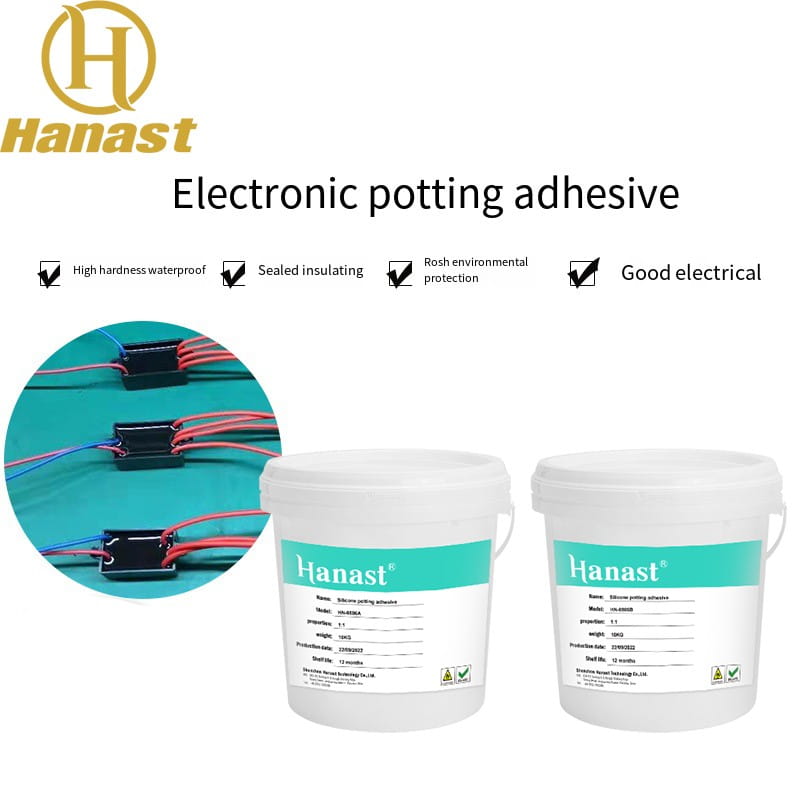Introduction to advantages and disadvantages and performance parameters of thermal conductive silicone grease
 Feb 24,2023
Feb 24,2023

 Hanast
Hanast
Heat conduction silicone grease is commonly known as heat conduction paste, also known as heat conduction paste. Heat conduction silicone grease is a heat conduction type organic silicone compound made of organic silicone as the main raw material, adding materials with excellent heat resistance and heat conduction performance. It is used for heat conduction and heat dissipation of power amplifiers, transistors, electronic tubes, CPUs and other electronic components, thus ensuring the stability of the electrical performance of electronic instruments and meters.
Thermal conductive silicone grease is one of the materials used to fill the gap between CPU and heat sink. This material is also called thermal interface material. Its function is to transmit the heat emitted by the CPU to the heat sink, keep the CPU temperature at a stable level, prevent the CPU from being damaged due to poor heat dissipation, and extend its service life.
In thermal management applications, even two surfaces with very smooth surfaces will have gaps when contacting each other. The air in these gaps is a poor conductor of heat, which will hinder the heat transfer to the heat sink. Thermal conductive silicone grease is a kind of material that can fill these voids and make the heat transfer more smooth and rapid.
As thermal conductive silicone grease is a chemical substance, it also has relevant performance parameters reflecting its own working characteristics. As long as we understand the meaning of these parameters, we can judge the performance of a thermal conductive silicone heat cream.
Thermal conductivity of thermal conductive silicone grease
The thermal conductivity of thermal conductive silicone grease is basically the same as that of radiator, and its unit is W/mK, that is, the thermal conduction power when the temperature difference of a column with a cross-sectional area of 1 square meter along the axial distance of 1 meter is 1 Kelvin (1K=1 ℃). The higher the value, the faster the heat transfer speed and the better the thermal conductivity of the material. At present, the thermal conductivity of Nuofeng electronic thermal conductive silicone grease can reach 5.2W/m.K.
Thermal resistance coefficient
The thermal resistance coefficient represents the blocking effect of an object on heat conduction. The concept of thermal resistance is very similar to that of resistance, and the unit is also similar to it (℃/W), that is, when the continuous heat transfer power of the object is 1W, the temperature difference at both ends of the heat conduction path. The lower the thermal resistance is, the better. Because the lower the thermal resistance is, the lower the temperature of the heating object is at the same ambient temperature and thermal power. The size of thermal resistance has a great relationship with the material used for thermal conductive silicone grease.
At present, the thermal resistance coefficient of mainstream thermal conductive silicone grease is less than 0.1 ℃/w, and the excellent one can reach 0.005 ℃/W.
working temperature
Due to the characteristics of silicone grease, its working temperature range is very wide. Working temperature is an important parameter to ensure that the thermal conductive silicone grease is in the solid or liquid state. If the temperature is too high, the volume of the thermal conductive silicone grease fluid will expand, the intermolecular distance will be extended, the interaction will be weakened, and the viscosity will be reduced; if the temperature is reduced, the fluid volume will be reduced, the intermolecular distance will be shortened, the interaction will be strengthened, and the viscosity will rise, both of which are not conducive to heat dissipation.
The working temperature of thermal conductive silicone grease is generally not more than 200 ℃, the high temperature can reach 300 ° C, and the low temperature is generally about - 60 ° C. We need not worry about the working temperature of thermal conductive silicone grease. After all, it is difficult to exceed the temperature of CPU/GPU by conventional means.
viscosity
Viscosity is a measure of fluid viscosity, which refers to the resistance to flow inside the fluid. It is expressed by the ratio of the shear stress to the shear rate of the fluid. There are many ways to measure viscosity, such as the unit of dynamic viscosity is pascals per second.
For thermal conductive silicone grease, its viscosity is about 2500 Pa · s, and it has a good tilability. It can be easily tiled around the chip surface under a certain pressure, and ensures a certain viscosity, so that the excess silicone grease will not flow after extrusion.
advantage:
(1) High thermal conductivity
(2) Low thermal resistance
(3) Large operating temperature range
(4) Low volatility
(5) Low oil separation (tends to zero)
(6) High and low temperature resistance, water resistance, ozone resistance, weather aging resistance, etc
Disadvantages:
(1) It cannot be applied in large area and cannot be reused;
(2) The product has poor stability for a long time. After continuous thermal cycle, it will cause liquid migration, leaving only the filling material, losing surface wettability, and may eventually lead to failure.
(3) Due to the different thermal expansion rates of materials on both sides of the interface, a "inflation" effect is caused, resulting in an increase in thermal resistance and a decrease in heat transfer efficiency;
The use of thermal conductive silicone grease is not the more the better, but the thinner the better under the premise of ensuring that the gap is filled. More coating is not beneficial, but will affect the heat transfer efficiency




 Home
Home
 Which potting adhesive has better thermal conductivity
Which potting adhesive has better thermal conductivity  You May Also Like
You May Also Like







 Tel
Tel
 Email
Email
 Address
Address












